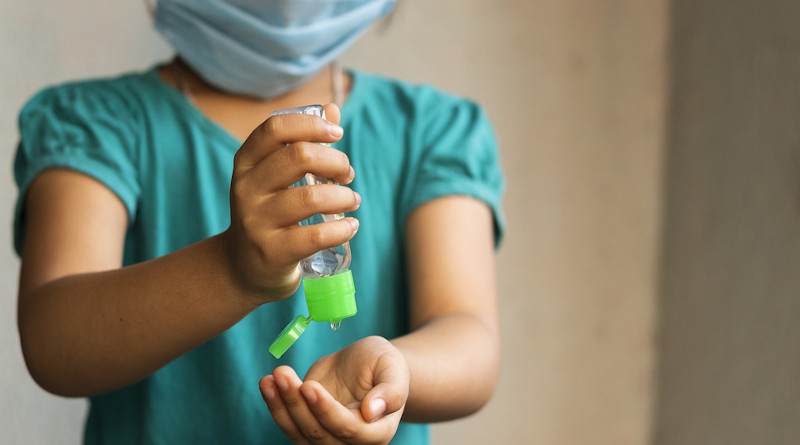COVID-19: How Are US Kids Doing? – Analysis
By Observer Research Foundation
By Nikhila Natarajan
With the Fall 2020 school term just round the corner and multiple versions of verbose US government policy guidance largely silent on the crucial question on next steps in case a single staff member or child gets infected with the coronavirus, Americans are consumed by spiralling concerns over how COVID-19 attacks children.
By July 24, the virus has killed 77 kids in 23 US states and sickened more than 2.1 million children and teenagers in the US, according to the COVKID Project, led by a team of epidemiologists who track cases in children and teens. More than 800 children under 17 years of age have needed intensive care hospitalizations and more than 300,000 paediatric cases have been reported from April 30 – July 22 alone, according to the same data.
Broadly, three themes have come to dominate the national conversation on COVID and kids: The Trump government’s pressure campaign to reopen schools, limited data on transmission in children, and polls now showing that Americans are increasingly opposed to in-person classes when schools reopen.
Infectious disease experts are still trying to pin down precisely how children get infected and how they transmit the virus. Available research fails to offer clear answers.
Children are shedding similar amounts of virus as adults, Tina Hartert of the Vanderbilt School of Medicine, told Smithsonian Magazine. Hartert is leading a six month study on children and COVID, funded by the National Institutes of Health (NIH).
A large new study from South Korea found that those between the ages of 10 and 19 can spread the virus as well as adults do.
A meta‐analysis of 551 laboratory‐confirmed cases in children under 18 across China, Italy and Spain summarises what we know so far about coronavirus in children: “Previously healthy children with COVID‐19 have mild symptoms. The diagnosis is generally suspected from history of household exposure to COVID‐19 case. Children with COVID‐19 and major underlying condition are more likely to have severe/critical disease and poor prognosis, even death.”
Despite the overarching view about kids and mild illness, the COVKID Project projects that at 10 percent of all children infected, America could see 20,000 hospitalised. There are currently about 74 million children in the United States.
As of July 21, 2020, 6.6 percent of reported COVID-19 cases and less than 0.1 percent of COVID-19-related deaths are among children and adolescents less than 18 years of age in the United States, according to data by the Centers for Disease Control and Prevention. An analysis by Bloomberg News, in places where the virus is surging, says children account for 10 percent or more of cases.
Among 345 confirmed COVID-19 paediatric cases for whom data on underlying conditions were available, the CDC reported that the most common underlying conditions were chronic lung disease (11.6%), cardiovascular disease (7.2%), and immunosuppression (2.9%).
The Donald Trump view of “they don’t catch it easily, they don’t bring it home easily, and if they do catch it, they get better fast” is just not cutting it with caregivers across the US.
According to a new poll conducted in mid-July, only about 1 in 10 Americans think daycare centers, preschools or K-12 schools should open this fall without restrictions, 3 in 10 say that teaching kids in classrooms shouldn’t happen at all and 6 in 10 are very afraid of the virus roaring back if schools reopen. Most think masks are essential to restart in-person instruction. This mood collides with the Trump administration pressure on schools to re-open.
With cases not going down and rapid tests still not available at scale, education experts say they don’t see how schools would be able to function with in-person classes.
Also, coronavirus isn’t the only danger.
There are at least 342 cases of Multisystem Inflammatory Syndrome in US children, according to the Centers for Disease Control and Prevention, and six reported deaths. This COVID linked illness is hitting kids two to four weeks after being exposed to the virus and causing symptoms like rashes, conjunctivitis and stomach discomfort.
The National Institute of Health (NIH) is currently studying 2,000 families to understand the rate of infection for children and how often they infect their families. The study, called Human Epidemiology and Response to SARS-CoV-2 (HEROS), also will help determine what percentage of children infected with SARS-CoV-2, the virus that causes COVID-19, develop symptoms of the disease. It will sample families every two weeks starting July 1.
Based on the stark contrast between how COVID affects adults versus 0-17 age group, America’s top infectious diseases expert Dr. Anthony Fauci frames the research challenge in this way: “Is this because children are resistant to infection with SARS-CoV-2, or because they are infected but do not develop symptoms? The HEROS study seeks to answer these questions.
Meanwhile, race data that has begun trickling in from some corners of the US shows mortality is nearly at the same level (4.5 per million) among Asian and white children in New York City.
Among the only two states – California and Illinois – that are reporting case counts for kids by race and ethnicity, California accounts for 477 cases among Asian children from April 26 to July 19. Illinois accounts for 17 cases among Asian children in the same time frame. Cases among whites are more than 2000 for the same period.
Some of the headline data on COVID in US kids are captured in the charts below.
The US leads the world in coronavirus caseload. More than 4 million people here have been sickened by the virus since January this year, more than 144,000 have died in less than seven months.
The views expressed above belong to the author(s).

